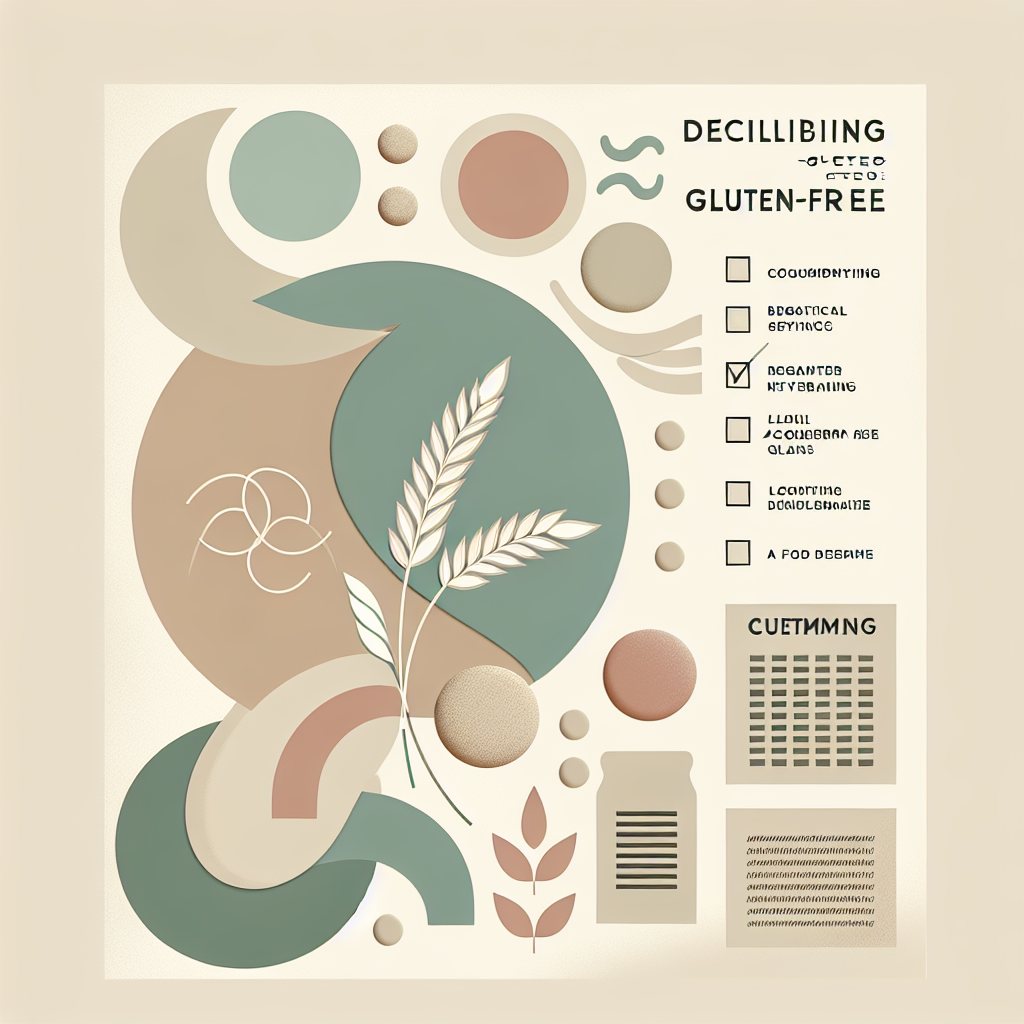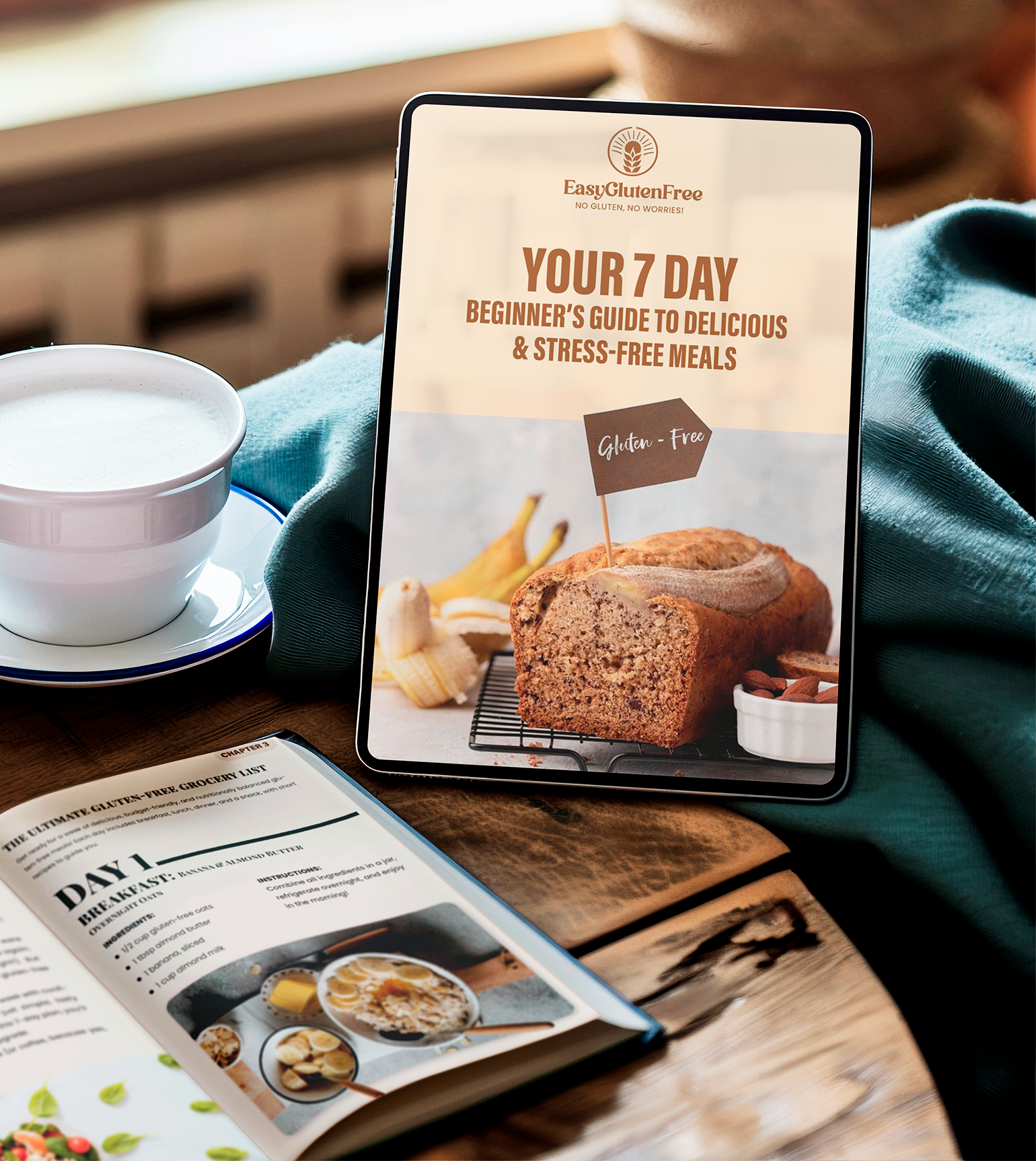Welcome to Easy Gluten Free, your number one source for all things gluten-free! A world where gluten-free living is fun, easy and yes, utterly delicious. Today, we’ll be discussing something a little different, but oh-so-necessary: a beginner’s guide for distinguishing between gluten-free food products and non-gluten-free food products.
You’ve seen them, perched on the supermarket shelves, boasting labels like “gluten-free,” “certified gluten-free,” or even “naturally gluten-free,” beckoning you with their healthful promises. But what exactly does all of this mean? And is there any real difference between them?
“Gluten” is a group of proteins found in wheat, barley, rye and triticale (a cross between wheat and rye) that gives dough its elastic texture and helps bread rise. But for people with celiac disease, an autoimmune disorder, or those with non-celiac gluten sensitivity, gluten is a literal pain in the gut. Even trace amounts can trigger uncomfortable symptoms such as bloating, diarrhea, fatigue, and, over time for those with celiac disease, even nutritional deficiencies.
To further complicate matters, not all food products labeled as ‘gluten-free’ are created equal.
The term “gluten-free” on a food label is regulated by the U.S. Food and Drug Administration (FDA) and means the food product contains less than 20 parts per million (ppm) of gluten – the lowest level that can be reliably detected. This is generally accepted as safe for most people with celiac disease. I emphasize most, because a small number of people may react to levels below 20 ppm.
“Certified gluten-free”, on the other hand, is a seal given by third-party organizations like the Gluten-Free Certification Organization (GFCO). This seal indicates the company has undergone rigorous testing and maintains standards even stricter than the FDA, required to have less than 10 ppm of gluten. Such products are what you should be really looking out for, especially for those who are extremely sensitive.
Next up is the term “naturally gluten-free”. Let me tell you a secret, gluten doesn’t naturally exist in all foods. Foods like fruits, veggies, meat, poultry, fish, beans and dairy are naturally devoid of gluten. However, here is where it gets tricky, these foods can still end up containing gluten due to cross-contamination if they are processed in facilities that also process gluten-containing foods. So, a product labeled as naturally gluten-free means the raw ingredients are gluten-free, but it doesn’t assure the absence of cross-contamination. That’s why it’s crucial to look for the “certified gluten-free” seal.
Now, determining if a product is gluten-free can be a lot like playing detective. Ingredients to watch out for that might raise a gluten-eyebrow are malt (which is made from barley), wheat starch, brewer’s yeast, and dextrin. A product that claims to be gluten-free but include these ingredients are immediately suspicious. Yes, these ingredients can be processed to remove gluten and the final product might contain less than 20 ppm, but for those who are highly sensitive, it’s safer to avoid them.
Understanding food labels is a crucial start in maintaining a gluten-free lifestyle, but don’t get disheartened thinking that you have to sieve through every product label in your pantry. A bit of knowledge upfront can save you a lot of discomfort down the road and ensure your gluten-free lifestyle remains exactly that – free from gluten!
Navigating through this gluten jungle can feel daunting at first, but rest assured, it becomes second nature with time and practice. My earlier post on “Understanding Gluten Sensitivity” has some great insights into the effects of gluten and how it can cause discomfort to individuals. Moreover, if you’re starting out on the gluten-free journey, don’t forget to check the post “Demystifying Gluten-Free Baking” which not only talks about the basics of gluten-free baking but also provides delightful recipes to start with.
Breaking free from gluten doesn’t mean breaking free from delicious food. It just means learning to see things from a different perspective, a gluten-free perspective. So fellow gluten-free travelers, it’s time to get savvy, not just with your gluten-free palate, but with your gluten-free knowledge as well. Remember, the more educated you are about what goes into your body, the better you can fuel yourself for all of life’s adventures.
With hope that this post helps unveil the mystery behind gluten-free labels, always remember to find joy and enjoyment in your gluten-free journey because you are not just what you eat, you are also all the love and positivity that you put into what you eat.
So until next time, eat well, live well, and be well!
**Category: Educational Guides**



